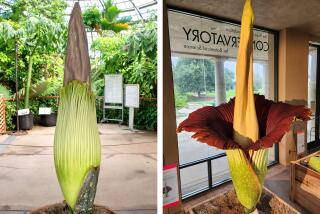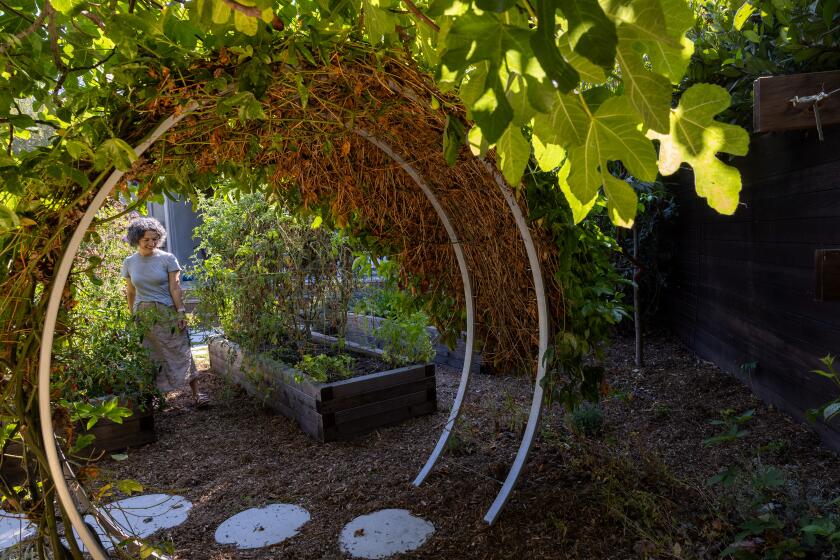ORANGE BUSH MONKEY FLOWER
Hummingbirds and bees, as well as nature-lovers, are drawn to the orange bush monkey flower, a shrubby, many-branched plant that can be seen on slopes, banks and open places in
Hummingbirds and bees, as well as nature-lovers, are drawn to the orange bush monkey flower, a shrubby, many-branched plant that can be seen on slopes, banks and open places in Southern California from March through August.
A native plant, it is a reliable source of nectar for birds and bees because of its long blooming season. But the attraction for humans is the plant’s monkey face-like flower and its pale to deep orange symmetrical flowers. Children love to squeeze the bloom, making it appear to smile.
The orange bush monkey flower (Mimulus aurantiacus) has stems that are covered with a sticky secretion. It is also known as the sticky monkey flower and reaches heights of up to 4 feet.
Flowers, which are five-lobed, are united into a tube. They are 1 1/4 to 2 inches long. The blossoms’ upper lips have two lobes that bend upward and the lower lips have three lobes bent downward, forming the monkey-like face.
The lanceolate leaves are three inches long, dark green on top, and pale and sparsely hairy underneath. Their edges are finely toothed.
A member of the figwort family, the monkey flower is widespread in North America, with 77 of the 150 species on the continent also growing in California.
A brick-red variety can be found in the Santa Susana Mountains.
More to Read
Sign up for The Wild
We’ll help you find the best places to hike, bike and run, as well as the perfect silent spots for meditation and yoga.
You may occasionally receive promotional content from the Los Angeles Times.






